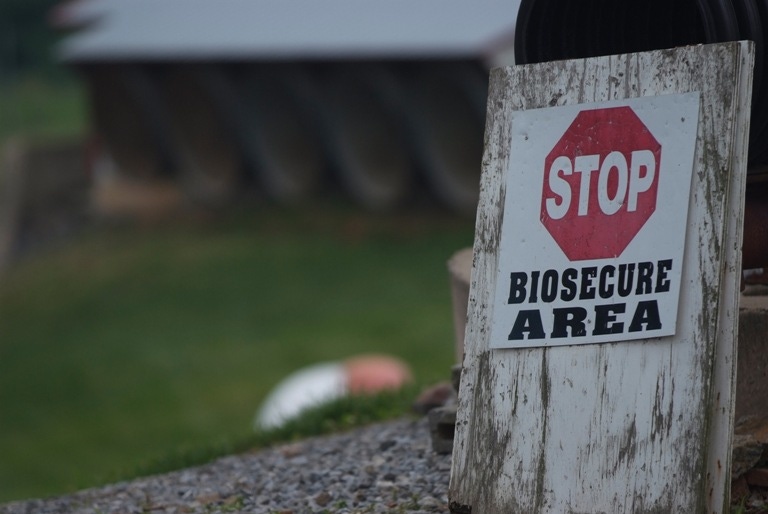
This time of year is especially critical for biosecurity programs to be well planned and executed, according to the Swine Vet Center (SVC) at St. Peter, MN.
Staff explain that there are many reasons why biosecurity problems crop up. One common reason is cold weather that allows pathogens like porcine reproductive and respiratory syndrome (PRRS), Transmissible gastroenteritis (TGE), swine dysentery and others to survive.
Prevention of entry into a site is the best treatment for any disease. Have a written biosecurity plan and review biosecurity practices regularly to make sure that they are being followed completely, SVC says.
Consider the following biosecurity practices to reduce the risk of disease entry into your farm:
Shower in/shower out and use the bench entry system. Wear farm clothing.
Non-shower farms should supply farm-specific boots, coveralls and hand sanitizers.
Wear separate inside and outside boots and coveralls if barns aren’t connected or if you need to go outside.
Use separate indoor and outdoor equipment to move deads and avoid contact of inside equipment with the outside.
Compost or incinerate deads rather than rendering.
If rendering, treat dead box as a highly contaminated area. Take deads out at the end of the day; don’t reenter the barn. Maintain a clean and dirty side of the box.
Maintain the whole site all-in, all-out if the site is positive for TGE, PRRS, brachyspira, etc.
Clean the entire site including the office, chutes, alleyways, hallways and any equipment or tools that have contact with pigs.
Evaluate truck washes to make sure that trucks are being cleaned properly.
Wash, disinfect and dry or bake market trailers, which have been found to routinely harbor TGE and other pathogens at animal concentration points. Trailers should be clean and dry upon arrival at pig sites.
Use dedicated trucks designated by health status and pig age.
Clean up feed spills immediately. Keep bait stations baited and deads removed to minimize birds, dogs, cats, wildlife and rodent activity on the site.
Work from clean to dirty farm sites.
Well-executed biosecurity practices daily can greatly reduce the risk of becoming infected with numerous pathogens that impact pig health, growth and productivity
About the Author(s)
You May Also Like





